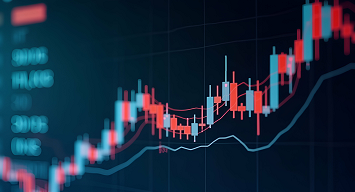Updated March 2020
What you don’t know can’t hurt you
Remaining ignorant or uninformed may apply to some things in life, but not leverage. The more you know the better.
Leverage is defined as having the ability to control larger sums of capital using little of your own funds.
Leverage in the forex market is reasonably straightforward. For every $1 in your account you can control $X amount where X is greater than 1. For instance, 100:1 leverage means you can control $100 for each $1 in your account. If you have $1,000 in your account, you have the ability to control $100,000 in positions.
Leverage achievable in the forex market is immense in comparison to other markets. In the equities market, for example, the majority of leveraged accounts allows you to borrow at a 2:1 ratio, e.g., a $10,000 deposit affords you the option of controlling $20,000. In foreign exchange, leverage of 500:1 or more is possible.
However, using leverage in the forex market does not, in any way shape or form, entail borrowing any money from the broker, despite many claiming this.
Using Leverage
To understand leverage, you must also recognise what margin is.
Margin is the amount of money the broker requires you to commit to cover potential future losses on a trade, before a position can be opened.
In stocks, when you trade on margin, you borrow money from your broker. When the trade is done you pay the broker back. In futures you trade agreements, or contracts. The margin, in this case, is a surety against the market moving against you. At no point do you borrow money from anyone.
The forex market operates the same way. You are not exchanging currency. Technically you enter into a 2-day forward agreement to do so – a short-term futures contract, if you will. In futures, where you could end in a delivery situation if you didn’t offset your position, in forex the broker rolls your position forward at the close each day (if you have an open trade).
Leverage in the Forex Market Is Not a Loan
In spot forex, as most are aware, currencies trade in pairs: you buy currency and sell the identical value of the other currency. The net difference is always zero.
When you buy a currency pair (EUR/USD) you buy the base currency; it’s always the base currency (bold) of the two currencies that is being bought or sold. The quote currency, known as ‘counter currency’, is the second currency (underlined), used to determine the value of the base currency.
A standard lot is also always 100,000 units.
Assume an account denominated in USD.
When you buy 1 standard lot of GBP/USD, you are buying, within the agreement, 100,000 British pounds and selling the equivalent in US dollars. Say the GBP/USD trades at $1.20560 and you enter an agreement to buy 1 standard lot, 100,000 units of the base currency (GBP), you receive 100,000 British pounds and deliver $120,560 (100,000 * 1.20560).
If GBP/USD rallies to $1.21000 and you sell 1 standard lot of GBP/USD at this price, you deliver 100,000 British pounds and receive $121,000 (100,000 * 1.21000). The difference between the opening and closing price is 44 points, or $440 ($121,000 – $120,560) which remains in your account, minus commission, after the trade is closed. As you can see, aside from a margin deposit, no borrowing takes place.
When the quote currency is a currency other than USD, or your account currency, then you deliver or receive units of the quote currency. However, when the profit or loss is calculated, trading platforms mechanically convert it to the base currency of the account at the prevailing exchange rate.
How Much Leverage Should I Use?
This is a common question and it depends on the risk taken on a trade. Let’s assume you have a $5000 account and you risk 2% on each trade, $100.
Let’s also assume you want to buy the EUR/USD at 1.1256, and have a stop set at 1.1246: a 10-pip stop loss. To trade this position, you would be required to enter using one standard lot, or $100,000. That’s twenty times your account size you’re trading. Nevertheless, by correctly sizing your position, you only have 2% of your account equity at risk even though you control a $100k position in the market.
Let’s take this a step further and assume you wanted to risk 10% of your account on the same trade discussed above, $500. To trade with a 10-pip stop, you’d then need five standard lots, or $500,000. Now, with this new risk profile, you’re trading a leverage ratio of 100:1 – 100 times your account size, but only risking 10% of your overall account equity.
As you can see, leverage is a double-edged sword. While it increases gains, it can exacerbate losses.
Respecting leverage is key.






